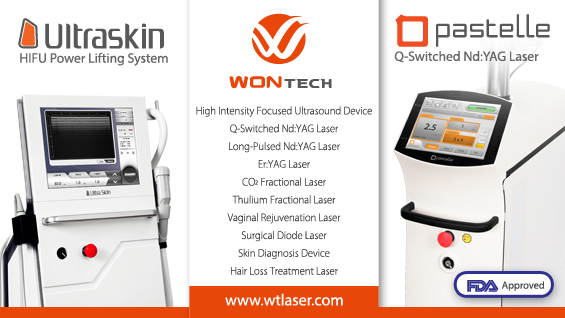Clinical diagnosis of lymphedema
The following screenings are used in diagnosis of lymphedema.
Physical examination: medical evaluation is needed when the patient presents edema of unknown causes.
History taking: Check history of cancer, insect bite, trauma, severe inflammation and obesity.
Family history: Check family history of elephantiasis.
Laboratory: If lymphatic system-related swelling is suspected, lymphatic system function test, diagnosis of lymphedema stage, and screening of concomitant arterial and venous diseases should be carried out.
Edema measurement: Measurements are taken from seven areas. Measurements are taken in certain intervals and change is assessed.
Arm: hand, wrist, two spots in the forearm, elbow, two spots in the upper arm.
Leg: foot, ankle, two spots in the calf, knee, two spots in the thigh.
※ Volume calculation
Volume= ∑ [(x² + y² + xy)]/3π
x: Distance between the floor to the area of measurement
y: Circumference of the area of measurement
[Advertisement] Ultra Skin/Pastelle – Manufacturer: WONTECH(www.wtlaser.com)
Venography
Ultrasound: Screens concomitant arterial or venous conditions.
MRI: Screens congenital vascular deformity.
CT scans: Screens malignancy.
Lymphangiogram: Isotope is injected in the interdigital space of the foot and a gamma camera is used to examine the movement of the lymph. Lymphangiogram is the most accurate diagnostic tool for examining lymph node damage, lymphatic duct damage, degree of lymphatic duct occlusions as well as their precise locations.
Image 1. Diagnostic flowchart for chronic edema.
Clinical stages of lymphedema
Stage 0 (latent)
There is no visible edema or symptoms but lymph transport capacity is damaged. This condition can continue for months or years before edema sets in. When edema becomes evident, the affected limb or area is already 30% larger in volume compared to the healthy contralateral side.
Stage 1 (reversible): Reversible pitting edema+, skin complications-
Protein-rich interstitial fluid has built up in the skin and subcutaneous tissues. Secondary changes have not taken place yet and the skin is smooth. Swelling is evident during the day but subsides with rest at night (reversible).
Prolonged stasis of protein-rich interstitial fluid causes the lymphatic ducts to open and the fluid to seep into tissues. This stimulates fibroblasts and collagen in connective tissues to increase. Protein accumulates further in the new fibrous tissues and attract fibroblasts, Fibroblasts promote collagenesis and tissues gradually harden (vicious cycle). If this stage is left untreated, it progresses into Stage 2. This stage can be treated with Complete Decongestive Physiotherapy (CDP).
Stage 2 (spontaneously irreversible): Reversible pitting edema+, skin complication+
Reversible pitting edema: Stasis of lymph further increases collagen production by fibroblasts. The skin is harder than in Stage 1. At this stage, the condition does not spontaneously disappear and requires adequate treatment.
When treated in Stage 2, recovery to almost normal state is possible but fibrous tissues remain. Due to compromised local immunity, the area is susceptible to skin inflammation. Complications such as eczema and erysipelas may develop. If left untreated it progresses into Stage 3.
Stage 3 (lymphostatic elephantiasis): Irreversible pitting edema+ skin complications+ fibrosclerosis
Irreversible nonpitting edema: Severe hyperemia develops and skin and fat tissues over-proliferate. Severe swelling of the hand and foot creates deeper wrinkles and fungal infection develops between creases due to retained moisture. Eczema, erysipelas, wart-like papillomatosis, calluses and hyperkeratosis, lymphorrhea (fistulae), and fibrosclerosis, etc. develop. Proliferated tissues remain after treatment.
Stemmers sign (positive)- If the dorsal skin of the second toe can be pinched, the result is negative and if not, the result is positive. If left untreated at this stage, malignant transformation of endothelial cells cause angiosarcoma or Stewart Treves Syndrome. About 3% of patients with lymphedema die due to these complications.
Stage 4: Irreversible pitting edema+, skin complications+, fibrosclerosis+, epitheliopathy+
Complications include epitheliopathy, irreversible nonpitting edema, papillomatosis, keratosis, lymphorrhea and angioma. Depending on the scholar, there are 3 or 4 levels of staging. At Stage 4, the fibrosis of the leg skin is very severe and is hard and rigid to the touch. Ultrasonography cannot detect a pulse. The skin surface is brittle and slight stimulation causes wounds with severe exudation. Inflammation persists and no other therapies are available other than antibiotics. When inflammation is uncontrolled and causes recurrent sepsis, amputation is needed.
-To be c ontinued-





















